Archive for the ‘Threats from Poaching and Poisoning’ Category
Wednesday, December 28th, 2011
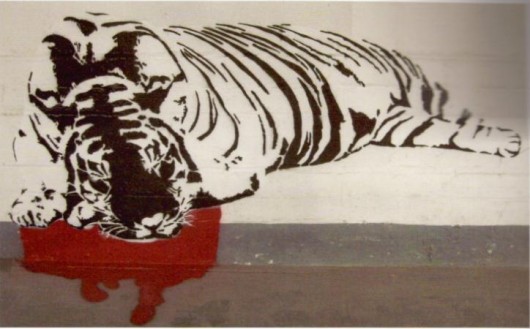 [Source: Xπr, Dublin, c.2007] [Source: Xπr, Dublin, c.2007]
.
In February 2010, at the advent of the Chinese Year of the Tiger, the World Wildlife Fund (WWF) reported that tigers were in crisis around the world. With as few as 3,200 left of this endangered species compared to 100,000 a century ago, it was clear that this would be the vital tipping point for tigers.
Two key causes of the tiger’s plight are (1) poaching to feed consumer demand for tiger body parts, mostly for use in traditional Asian medicines (TCM) and folk remedies, and (2) deforestation as more and more forests are cleared for paper and palm oil, tiger habitat disappears daily.
.
‘New Study shows Bengal Tiger’s Habitat in Danger’
.
[Source: ‘New Study shows Bengal Tiger’s Habitat in Danger’, World Wildlife Fund, 20100119, ^http://www.worldwildlife.org/who/media/press/2010/WWFPresitem14914.html]
..
A new study by WWF scientists and partner organizations has found global climate change could shrink Bangladesh’s Sundarbans tiger habitat by 96 %, potentially reducing the tiger population to fewer than 20 breeding individuals!
An estimated sea level rise of 11.2 inches above 2000 levels by 2070 means this unique mangrove ecosystem could disappear within half a century.
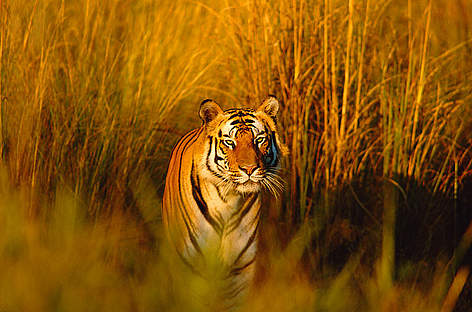 Bengal Tiger (Panthera tigris tigris)
© naturepl.com/Francois Sevigny / WWF Bengal Tiger (Panthera tigris tigris)
© naturepl.com/Francois Sevigny / WWF
.
Sundarbans Delta
.
The Sundarbans delta is the largest mangrove forest in the world.
This UNESCO World Heritage Site is shared by India and Bangladesh and sits at the mouth of the Ganges River. It is home to an estimated 254-432 Bengal tigers, the only tiger population adapted to live in mangroves. The tigers here regularly swim between islands and are the only tigers to have crabs and other seafood as an important part of their diet.
The area is an amazing ecosystem that houses a plethora of species including the spotted deer (the tiger’s prey), water birds, many kinds of fish, marine mammals, crocodiles, and snakes. The landscape naturally protects the area from natural disasters such as cyclones, storm surges, and wind damage. The mangroves are home not only to endangered fauna like tigers, but also to several million people who depend on the Sundarbans for their livelihoods.
The Bengal tiger population has already been under threat from poaching and habitat destruction and loss, and research suggests that the seas may be rising faster than originally thought.
Worldwide, tigers occupy only 7 percent of their historic range with as few as 3,200 left in the wild. The study encourages local governments to take immediate action to conserve and expand mangroves while cracking down on poaching. It suggests that globally, countries should work strongly on reducing greenhouse gas emissions in order to save the Sundarbans.
.
The Siberian (Amur) Tiger – Conservation Threats
.
[Source: ^ http://www.wcsrussia.org/Wildlife/AmurTigers/ConservationThreats/tabid/1468/language/en-US/Default.aspx]
.
The Siberian tiger is a tiger subspecies inhabiting mainly the Sikhote Alin mountain region with a small subpopulation in southwest Primorye province in the Russian Far East. In 2005, there were 331–393 adult-subadult Amur tigers in this region, with a breeding adult population of about 250 individuals.
The main threats to the survival of the Siberian Tiger are (1) poaching, (2) habitat loss, and (3) illegal hunting of ungulates, which are tigers’ main prey (Ed: looks similar to a lama). Because they increase access for poachers, roads are another important threat to the Siberian tiger. Intrinsic factors such as inbreeding depression and disease are also potential threats to this big cat, but are less understood.
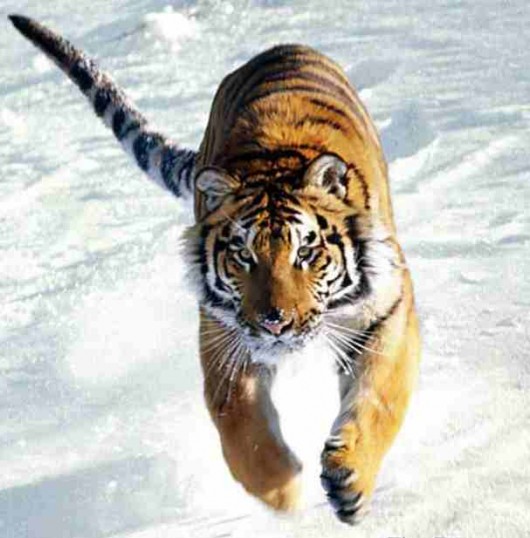 The Siberian tiger (Panthera tigris altaica), also known as the Amur tiger The Siberian tiger (Panthera tigris altaica), also known as the Amur tiger
.
Poaching
.
Roads in Amur tiger habitat, Russian Far East Wildlife Conservation Society (WCS) research has demonstrated that human-caused mortality accounts for 75-85% of all Amur tiger deaths. Current estimates indicate that 20-30 tigers are poached in the Russian Far East each year, although actual numbers may be higher.
Population modeling based on Siberian Tiger Project field data suggests that poaching rates exceeding 15% of the adult female population could have dangerous repercussions, especially as tigers have fairly low population growth rates compared to other big cats. Analysis of mortality data in Sikhote-Alin Biosphere Reserve indicates that poaching rates may be at least this high in a significant area of Russian tiger range.
Tigers are most commonly poached for their fur and for their body parts, such as bones, that are used in Traditional Chinese Medicine. The opening of the border between China and Russia after the fall of the Soviet Union has now made it possible to easily transport goods to Chinese markets and beyond. Although tigers are a protected species in Russia, enforcement agencies have very limited ability to catch convict poachers, and, even when this happens, fines are relatively small and disincentives insufficient. Poaching problems are further exacerbated by low incomes in many rural areas of the Russian Far East – sale of a tiger skin and bones represents a substantial source of income for poor people in remote villages.
It is also common for hunters to poach tigers to eliminate competition for ungulates and for locals to kill tigers in retaliation for depredations on domestic animals such as dogs and cows.
.
Habitat Loss
.
In Russia, human population growth does not threaten habitat as it does in many other tiger-range countries. However, activities such as logging, grazing, various development projects and uncontrolled fires are all resulting in direct habitat loss in the Russian Far East. Habitat is increasingly being divided into isolated patches, particularly at the southern edge of Amur tiger range.
Logging takes place in most of Amur tiger habitat. Although existing guidelines for timber harvest are actually quite sufficient, significant illegal logging and overharvest still occur. Selective logging, rather than clear cutting, is most common in tiger habitat, and does not seriously impact the quality of the habitat, if access to the extensive road system is controlled (thereby limiting poaching).
Fires are another important form of habitat loss. Many local residents consider fires to be the main cause of loss of forest habitat in parts of Primorsky Krai, and Amur tigers avoid areas that have burned, as they provide neither adequate cover for hunting, nor the habitat needed for prey.
.
Illegal Hunting of Ungulates
.
Illegal hunting of ungulates such as deer and wild boar significantly reduce prey availability for tigers. While official estimates continue to report stable numbers of ungulates, many hunters and wildlife biologists believe that abundance of ungulates in the Russian Far East has decreased considerably over past 15 years. Analyses from WCS’s Amur Tiger Monitoring Program clearly demonstrate that ungulate numbers are often 2-3 times higher inside protected areas, which are nonetheless impacted by poaching, though to a lesser extent.
Low ungulate numbers also foster a sense of competition between hunters and tigers. When ungulates numbers are low, it is easy to blame tigers, even when the root cause of population declines is over-harvest by humans. When there is little prey available in the forest, tigers sometimes enter villages and prey on domestic animals, including dogs and livestock, which creates tiger-human conflict situations.
.
Roads
.
The number of roads in Amur tiger habitat is increasing steadily as logging activities and development push into even the most remote regions. Besides allowing greater access for poachers, roads increase tiger mortality from vehicle collision, and increase the probability of accidental encounters between tigers and people, leading to tigers being shot out of fear or opportunity.
Roads also provide poachers greater access to ungulate habitat, which reduces tiger prey abundance. Roads can be divided into two categories: primary roads, which are maintained year-round and provide access between villages and towns; and secondary roads, which are not regularly maintained but nonetheless allow access.
From 1992 to 2000 the Wildlife Conservation Society studied the fates of radio-collared Siberian tigers living in areas with no roads, secondary roads and primary roads. Our findings:
- 100% survival rate for adult tigers living in areas with no roads
- 89% survival rate for adult tigers living in areas with secondary roads
- 55% survival rate for adult tigers living in areas with primary roads
.
These results clearly demonstrate that the presence of both secondary and primary roads both greatly increase the odds of tigers being poached, and indicate the need for road closures and access control. (Ed. Main roads contribute to tiger road kill reducing tiger populations by about a half).
.
‘World tiger population shrinking fast’
.
..
[Source: ‘World tiger population shrinking fast‘, IOL, 20080312, ^http://www.iol.co.za/scitech/technology/world-tiger-population-shrinking-fast-1.392813]
.
The number of tigers in the world has diminished at an alarming speed in recent years, global conservation group WWF cautioned on Wednesday, blaming poaching for much of the decline. “We are left with roughly 3,500 tigers (2008) all around the world now,” Bivash Pandav, a tiger specialist at the World Wildlife Fund, said, pointing out that “five years back, the estimate was around 5,500 to 6,000.” [Ed: In 2010 total world population was 3,200, and in 2011?, 2012?]
.
In India, which is home to nearly half of the world’s tigers, or 1,400 animals,
the number of the big cats has shrunk by 60% over the past three to four years!
…Pandav said during a visit to Sweden.
A century ago, some 40,000 tigers roamed the Indian subcontinent, according to the WWF, which singles out poaching, widespread destruction of the tigers’ natural habitat and human hunting of their prey as the main causes of today’s dire situation.
“Poaching is primarily to meet the demand for tiger bones in Traditional Chinese Medicine (TCM)… That’s the immediate reason behind the decline of tigers,” Pandav explained.
“The situation is pretty bad in the sense that they (the tigers) are rapidly being wiped out from many parts of their range,” he added.
.
According to the WWF:
- On the Chinese market, a dead tiger can be worth “tens of thousands of dollars”
- The United States is the world’s second largest market for tiger products.
.
Despite the daunting challenge of preserving tiger populations, Pandav insisted that “there is definitely hope,” pointing out that big cats “are prolific breeders (and) produce large numbers of offspring.”
“Despite all the problems, there are a couple of places in India (where tigers) are doing pretty well,” he said.
To rectify the overall situation however, the animals need access to forests, food and undisturbed habitats, Pandav said, insisting that the main priority was to protect the tigers from poachers and put “pressure on China to stop the farming of tigers.”
“The Chinese government is actively planning to legalise the trade (of tiger products) and if they legalise this trade then the demand for wild tigers is going to increase many fold,” he said, pointing out that people preferred products from wild tigers over farmed animals. That is going to be the death blow for the tigers in the wild,” he said.
.
‘Plight Tiger’
.
[Source: ‘Plight Tiger‘, by Neha Sinha, India Express, 20090101, ^http://www.indianexpress.com/news/plight-tiger/405197/]
..
‘At the beginning of this year, a ground-breaking, new, and scientific tiger census, which took two years to complete, announced that there were 1,411 wild tigers left in India. By November, the Government had admitted that of that number, 14 tigers had been poached this year. The figure actually may be nearly double.
The poaching cases registered and seizures of body parts of tigers this year show that around 27 of the big cats have been killed in 2008, making the number of wild tigers in India less than even 1,400, and showing that government efforts have failed so far to deter poachers.
“On an average, 25 tigers are poached every year”
.
…says an official from the NTCA. Data compiled by the WPSI shows an equal number, 27 tigers, were killed in 2007.
In January, a tiger survey commissioned by the Government indicated that there were only five-seven tigers left in Panna. Now, tiger experts fear the number may actually be just two. Kanha, also in Madhya Pradesh, lost a tiger to poaching by electrocution, using an 11,000-volt current, this November.
According to data compiled by the Wildlife Protection Society of India (WPSI), there have been 27 instances of tiger skins and parts being found in different parts of the country in 2008. The Wildlife Crime Control Bureau (WCCB), which came into existence this year, recovered a tiger skeleton from Gurgaon and two tiger skins from Himachal Pradesh, a case that involved a Tibetan national.
“Tiger killing may be higher than what recorded numbers tell us,” admits National Tiger Conservation Authority Member Secretary Rajesh Gopal. “Poachers are very clandestine and at times even a tiger carcass may not be found.”
A WCCB official said their main problem was that the trade in tiger parts was trans-country and inter-state, necessitating strong intervention from the Centre.
“Day before, we managed to get a case registered in Bihar for Dariya, a tiger poacher, who was arrested in December in Katni, Madhya Pradesh. A case had to be registered in Bihar where he is suspected to have poached tigers from the Valmiki tiger reserve. We have to expedite history-sheeting quickly to facilitate arrest of poachers who travel and escape extensively,” he added.
“The fact that tiger numbers are going down but poaching remains constant is a huge cause for concern. The number of tigers as per the Census is very low. If we don’t improve protection, India may well lose its tigers,” says Belinda Wright, Executive Director, WPSI.
The tiger census also shows another trend: that India’s tigers are now found only in areas with a high degree of protection, which is sanctuaries or existing tiger reserves. Recognising this, the NTCA has given approval to as many as 12 new tiger reserves this year, of which four — Pilibhit (Uttar Pradesh), Sunabeda (Orissa), Rapa Pani (MP) and Sahyadri (Madhya Pradesh) — have got in-principle approval.’
.
Videos on the plight of the Bengal Tiger
.
Videos in 2010 on the Bengal Tiger by big cat expert Dr. Alan Rabinowitz i, hosted by the BBC on its Lost Land of the Tiger series.
Click the following link then scroll down to watch the four episode extracts:
- Episode 1: ‘Fragmented Isolation‘
- Episode 1: ‘Tantalizing Tigers‘
- Episode 2: ‘Nowhere To Go‘
- Episode 2: ‘Population Patterns‘
.
.
.
What if tigers did become extinct?
.
[Source: ‘What if tigers did become extinct?’, World Wildlife Fund, ^http://wwf.panda.org/what_we_do/endangered_species/tigers/last_of_the_tigers/what_if_tigers_did_become_extinct_/]
.
.
Coextinction of other species
.
The tiger is at the top of the food chain in all the ecosystems it lives in. If one species in a food chain becomes extinct there is a knock-on effect on other species. The loss of a main predator can actually cause the extinction of a prey species as greater competition presents a threat to a species.
When the Bali and Javan tigers became extinct in the 20th century, poachers turned their attention to the Sumatran tiger. Which animal will be exploited into extinction once all the tigers are gone?
If tigers were to go, the forests which are currently protected as key habitat would be more likely to fall victim to illegal logging, conversion to agriculture and development. This leads to greater CO2 emissions and climate change. Deforestation currently accounts for 15% of global greenhouse gas emissions.
Which species live alongside the tiger?
Many of the species which could be affected by the disappearance of tigers are also endangered and already fighting for their own survival. The 5 sub-species of tigers live in some of the most spectacular parts of the world which provide a home for some other amazing species, including:
- Brown bear
- Sloth bear
- Sun bear
- Dhole
- Elephant
- Clouded leopard
- Amur leopard
- Lion tailed macaque
- Musk deer
- Orangutan
- Rhino
- Saola
.
Tiger Reserves
.
Huangnihe River Nature Reserve
^http://www.ancientsites.com/aw/Places/District/1138640
.
India’s Panna Tiger Reserve
^http://www.pannatigerreserve.in/
.
Sundarbans Tiger Project
^http://www.sunderbansnationalpark.com/
.
Palamau Tiger Reserve
^http://projecttiger.nic.in/palamau.htm
.
Kanha Tiger Reserve
^http://projecttiger.nic.in/kanha.htm
.
Tadoba-Andhari Tiger Reserve
^http://www.tadobatiger.com/
.
Hukawng Valley Wildlife Sanctuary
^http://www.wcs.org/news-and-features-main/a-valley-of-tigers.aspx
.
.
Read More About the Campaigns to Save Tigers from Extinction
.
^http://www.panthera.org/species/tiger/subspecies
.
^http://www.savetigersnow.org/
.
^http://www.internatyearofthetiger.org/plight.htm
.
^http://www.forevertigers.com/plight.htm
.
^http://www.bbc.co.uk/nature/life/Tiger
.
Chinese unethical handing of Tigers…
.
A herd of Siberian tigers chased and devoured live chicken flung at them from a tourist safari bus at the Siberian Tiger Forest Park in Harbin, north-west China, on Tuesday.
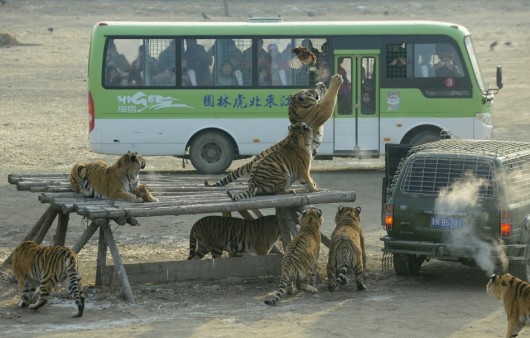
Siberian Tigers Grab at Live Chickens Tossed at Them to Tourists’ Delight in China
20111227 (two days ago)
Photo by Sheng Li
.
[Source: ‘Siberian Tigers Grab at Live Chickens Tossed at Them to Tourists’ Delight in China‘, by By Sanskrity Sinha, IBTimes, 20111228, ^http://www.ibtimes.com/articles/273353/20111228/siberian-tigers-grab-live-chickens-tossed-tourists.htm]
.
 Tiger Parts used in backward TCM Wine Tiger Parts used in backward TCM Wine
.
In China, only about 20 tigers are thought to be left in the wild!
.
“The existence of tiger ‘farms’ and increasing illegal trade in tiger products is seriously threatening this precious species.”
~ Ge Rui, Asian Regional Director of the International Fund for Animal Welfare.
.
[Source: ‘Thirst is building for tiger bone wine’, by Yang Wanli (China Daily), 20100301, ^http://www.chinadaily.com.cn/metro/2010-03/01/content_9516414.htm]
.
Tags: Amur Tiger, Amur Tiger Monitoring Program, Bangladesh, Bengal Tiger, China, fires, habitat loss, India, National Tiger Conservation Authority, Russian Far East, Siberian Tiger, Siberian Tiger Project, Sundarbans Delta, TCM, tiger, tiger census, Tiger Plight, tiger poaching, Traditional Chinese Medicine, Wildlife Conservation Society, Wildlife Crime Control Bureau, Wildlife Protection Society of India, World Wildlife Fund
Posted in Threats from Bushfire, Threats from Deforestation, Threats from Poaching and Poisoning, Threats from Road Making, Tigers | No Comments »
Add this post to Del.icio.us - Digg
Tuesday, December 27th, 2011
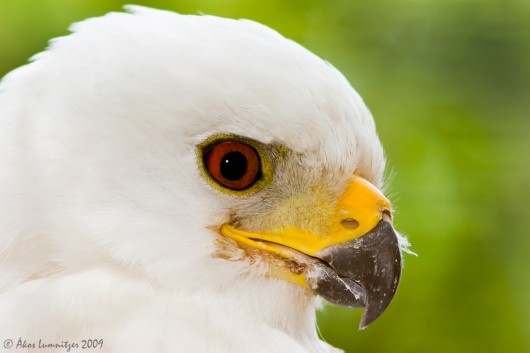 Grey Goshawk (white morph) (Accipiter novaehollandiae)
[Photo courtesy of Ákos Lumnitzer with permission, ^http://www.amatteroflight.com/]
Click photo to enlarge. Grey Goshawk (white morph) (Accipiter novaehollandiae)
[Photo courtesy of Ákos Lumnitzer with permission, ^http://www.amatteroflight.com/]
Click photo to enlarge.
 Play call of Grey Goshawk
Source: ^http://www.aviceda.org/audio/?p=248
Play call of Grey Goshawk
Source: ^http://www.aviceda.org/audio/?p=248
The white form of the Grey Goshawk is the only pure white raptor in the world. In Tasmania, Grey Goshawks, are listed as endangered species, with their nesting habitat affected by logging. It favours tall closed forests including rainforests and particularly those of the large wild tracts of tall forest across the Tarkine.
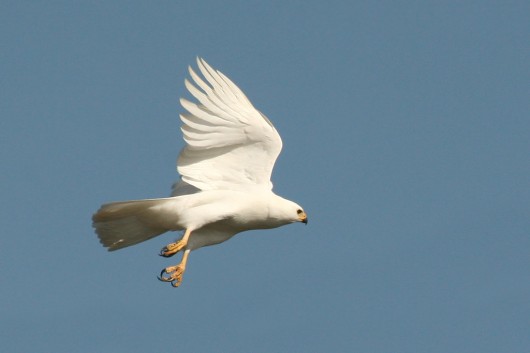
Grey Goshawks form permanent pairs that defend a home territory year round. Both sexes construct a stick nest lined with leaves high in a tree fork, and often re-use the same nest. While the female does most of the incubation, the male relieves her when she needs to feed, and catches most of the food for the young, which the female tears up for them to eat.
.
[Source: ^http://birdsinbackyards.net/species/Accipiter-novaehollandiae]
.
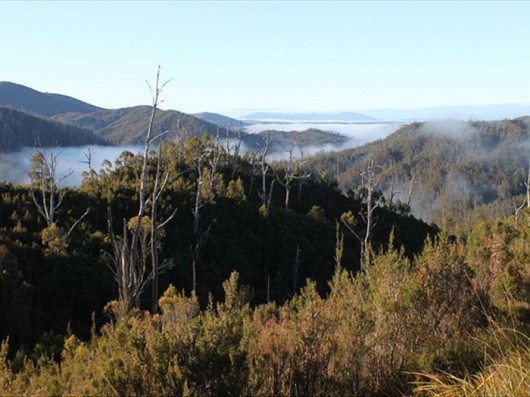
“The Tarkine rations nothing.
It gives its all in a fury of excess that is raw coast, mountain ranges,
dark gashes of gullies and the benediction of unbroken tracts of old-man rainforest.”
.
~ ‘Tarkine‘ (photographic book), 2010, edited by Ralph Ashton, inspired by Robert Purves AM, published by Allen & Unwin.
^http://www.allenandunwin.com/default.aspx?page=94&book=9781742372846
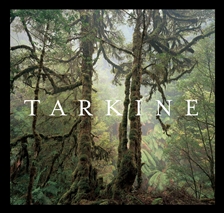
.
Bordered by the Arthur River in the north, the Pieman River in the south, the Murchison Highway in the east, and the ocean to the west, Tasmania’s wild Tarkine is a magnificent wilderness sanctuary but threatened by ongoing industrial interests from mining and logging, as well as from road making, off-road vehicles, poaching, cattle and exploitative tourism.
Scott Jordan from the Tarkine National Coalition says:
“We see it as an area containing great wilderness values, a lot of natural – as well as cultural – values. We see it as an area that really needs to be protected and enjoyed.”
 Volunteer Tasmanian Environmentalist, Scott Jordan Volunteer Tasmanian Environmentalist, Scott Jordan
The Tarkine National Coalition wants to see it made a national park, and protected under a World Heritage listing, before it is ruined and goes the same way as Mount Lyell.
Visit: The Tarkine Coalition’s website: ^http://www.tarkine.org/
.
With Tasmania’s alternating Labor and Liberal governments still hell bent on carving up Tasmania’s remaining wilderness, they have divvied up more than 50 mining exploration licences in the Tarkine.
There are some ten proposed mines set to dig up the Tarkine!
.
Whereas Alan Daley from industrial miner Tasmania Magnesite has plans to develop an open cut mine. He is reticent about identifying the Tarkine…“I’m not sure what the Tarkine is. To my knowledge there isn’t a boundary yet defined as the Tarkine.” I understand the marketing value.”
Tasmania Magnesite (Beacon Hill Resources) wants to establish an open cut magnesite mine within the Keith River area, Shree Minerals wants an open cut iron ore mine at Nelson Bay River, and Venture Minerals are planning open cut mining for tin and tungsten in the rainforest at Mount Lindsay.
 Industrial Miner, Alan Daley Industrial Miner, Alan Daley
.
[Source: ‘A week in the west‘: the Tarkine’, by Eliza Wood, ABC Rural, 20111027, ^http://www.abc.net.au/rural/content/2011/s3349649.htm]
.
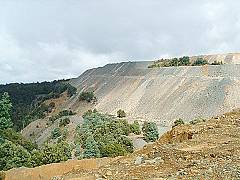 Savage River Mine
This is on the northern boundary of the Tarkine Savage River Mine
This is on the northern boundary of the Tarkine
.
Editor:
It has become apparent to this observer, that many of those with a broad commitment to protecting Nature are comparatively young. Whereas those ‘baby-boomer‘ industrial executives and old school Labor/Liberal politicians seem narrower in outlook, committed to pursuing 20th Century exploitation as if such business-as-usual plundering of Nature is limitless. May be I’m generalising.
.
Tim Flannery:
“One of the greatest tragedies of Tasmania is that its European inhabitants have always wanted their island home to be something it is not – a little England perhaps, or the world’s largest sheep paddock or even, in later years, the Ruhr of the South (which was to be powered by Tasmania’s out-of-control hydro schemes). All such dreams have failed, but nevertheless their pursuit has cost the present generation dearly.” (Tarkine, 2010, p.4-5).
.
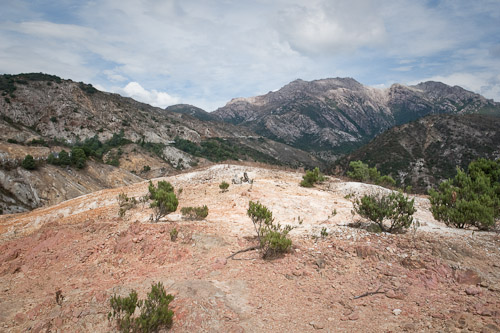 Tasmania’s Queenstown
Left behind by 19th and 20th Century industrial miners
This is south of the Tarkine Tasmania’s Queenstown
Left behind by 19th and 20th Century industrial miners
This is south of the Tarkine
.
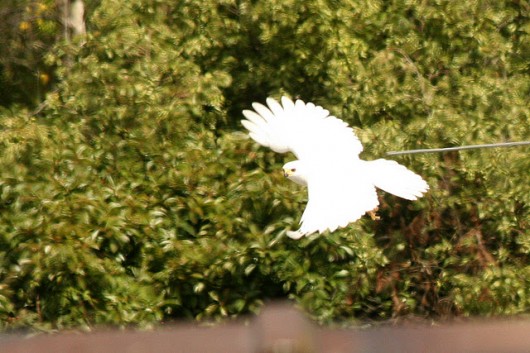 Grey Goshawk spreading its wings in flight Grey Goshawk spreading its wings in flight
.
Tags: Accipiter novaehollandiae, Arthur River, Beacon Hill Resources, Grey Goshawk, Mount Lyell, Pieman River, Savage River Mine, Shree Minerals, Tarkine National Coalition, Tarkine wilderness, Tasmania, Tasmania Magnesite, Venture Minerals, World Heritage listing
Posted in Raptors (other), Tasmania (AU), Threats from Deforestation, Threats from Mining, Threats from Poaching and Poisoning, Threats from Road Making, Threats from Tourism and Recreation, Threats to Wild Tasmania | 9 Comments »
Add this post to Del.icio.us - Digg
Sunday, December 25th, 2011
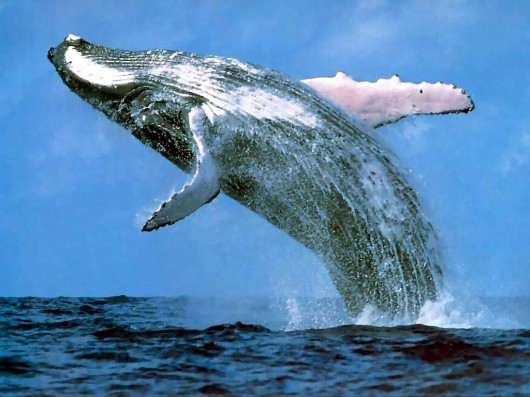 Humpback Whale in a magnificent breach
(click photo to enlarge)
^http://rtseablog.blogspot.com/2011/09/bermuda-humpback-whale-sanctuary-noaa.html Humpback Whale in a magnificent breach
(click photo to enlarge)
^http://rtseablog.blogspot.com/2011/09/bermuda-humpback-whale-sanctuary-noaa.html
.
Christmas is a time for goodwill and hope.
.
“There is joy in the companionship of others working to make a difference for future generations,” declares activist David Suzuki, “and there is hope. Each of us has the ability to act powerfully for change; together we can regain that ancient and sustaining harmony, in which human needs and the needs of all our (plant and animal) companions on the planet are held in balance with the sacred, self-renewing processes of Earth.”
.
We at The Habitat Advocate convey our goodwill and hope to those out there right now defending Nature.
We convey our goodwill and hope to the environmental activists in Tasmania’s wild defending threatened forests.
 Activists of Still Wild Still Threatened (SWST) Activists of Still Wild Still Threatened (SWST)
Camp Flozza, Upper Florentine Valley
Tasmania’s Southern Forests
^http://www.stillwildstillthreatened.org/
.
SWST advocates for the immediate formal protection of Tasmania’s precious Southern Forests using a combination of political and corporate lobbying, community education, research, exploration and frontline direct action. We also promote the creation of an equitable and environmentally sustainable forest industry in Tasmania. Protecting Tasmania’s ancient forests: a real climate change solution.
.
We at The Habitat Advocate convey our goodwill and hope to the environmental activists in the Southern Ocean defending threatened whales.
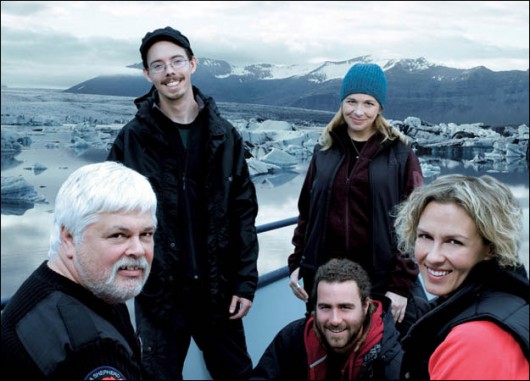 Captain Paul Watson and the crew of Sea Shepherd Conservation Society (SSCS)
currently braving the freezing Southern Ocean south of Australia to defend whales from poachers.
^http://www.seashepherd.org/ Captain Paul Watson and the crew of Sea Shepherd Conservation Society (SSCS)
currently braving the freezing Southern Ocean south of Australia to defend whales from poachers.
^http://www.seashepherd.org/
.
Sea Shepherd’s mission is to end the destruction of habitat and slaughter of wildlife in the world’s oceans in order to conserve and protect ecosystems and species.
The meaning of Christmas has ancient Pagan origins pre-dating Christianity, coinciding with the Winter Solstice of the northern hemisphere celebrating the return of life at the beginning of winter’s decline. [Source: ^http://www.christmastreehistory.net/pagan]
Consistent with the original goodwill meaning of Christmas, we advocate the inclusion of Nature in this goodwill spirit:
- That each us strives to do something every day for wildness.
- That each us tries to practice simplicity and frugality. Conserve, reuse, and recycle to reduce pressures for resource extraction on remaining wildlands. Buy less. Play more.
- That each us supports conservation organizations that champion wildness, especially those acquiring acreage for wildlands preservation.
.
[Source: ^http://naturepantheist.org/ecological.html]
.
Eco-Christmas spirit
.

As environmental activist David Suzuki advocates, “each of us has the ability to act powerfully for change”. So we like the initiative of Melbourne-based company ‘Eco Christmas Trees‘. Eco Christmas Trees rents out ‘living growing trees providing the real Christmas experience without cutting down a tree‘.
Check out their website: ^http://www.ecochristmastrees.com.au/
 The real Christmas experience without cutting down a tree. The real Christmas experience without cutting down a tree.
.
“What’s the use of a fine house if you haven’t got a tolerable planet to put it on?”
.
~ Henry David Thoreau, environmental activist, (1817 – 1862)]
.
Merry Yule!
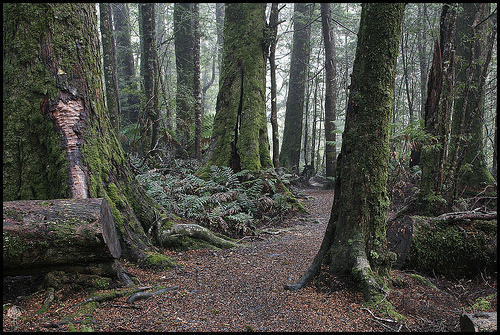
.
Tags: Christmas experience without cutting down a tree, Eco Christmas Trees, Eco-Christmas spirit, goodwill to Nature, Humpback Whale, Merry Yule, Sea Shepherd Conservation Society, Still Wild Still Threatened, trees
Posted in 03. + Habitat Equality, 07 Habitat Conservation!, 31 Old Growth Conservation!, 34 Wildlife Conservation!, Ph03 Ecocentric Ethics, Ph04 Species Justice, Threats from Deforestation, Threats from Poaching and Poisoning, Whales | No Comments »
Add this post to Del.icio.us - Digg
Thursday, December 22nd, 2011
This article was initially published by Tigerquoll on Candobetter.net on 20090625 under the title ‘Shooters Party – fanatical red necks pushing for open season in National Parks’.
.
 An infamous licensed shooter
An infamous licensed shooter
.
Since May 2009, Robert Brown MP of the Shooters Party has been pushing for the Game and Feral Animal Control Amendment Bill 2009 to be passed into legislation in New South Wales, Australia. The spin of this Bill is so feral animals can be controlled in National Parks. But in reality the proposed changes would mean the following main changes:
.
- Many of Australia’s native fauna across NSW would be condemned as ‘game animals’ just like in colonial times, when Australian native animals were despised as ‘vermin’. Other native animals can be included in the shooters hit list so long as there is consultation with the Minister for National Parks (DECC).
- It would be lawful for sporting shooters to hunt and shoot native fauna in all National Parks, State Forests, Crown Land and ‘private game reserves’ across NSW. Killing wildlife is to be branded as ‘conservation hunting’ and basically would be permissible through most natural landscapes outside built up areas.
- The Game Council of NSW, which is a government body dominated by members of shooting and hunting clubs, and it would assume authority for granting shooting licences in National Parks.
- Shooters and hunters in National Parks would be immune from protesters trying to protect native animals and birds – as it would become “an offence to approach persons (within 10 metres) who are lawfully hunting on declared public hunting land, or to interfere with persons lawfully hunting game animals”.
- Any environmental protection legislation that impedes shooting and hunting of native animals is to be overriden by the new changes – such as under the National Parks and Wildlife Act 1974.
- Hunting of native game animals can be done by non-commercial shooters – i.e weekend sports shooters. Using spot lights is optional and it is ok to leave the dead, dying and injured prey where they fall.
- In the case of native waterfowl, licensed game hunters will be required to pass an official identification test of native waterfowl. The record of shooters killing protected bird species is woeful, yet the proposed legislation won’t make any difference.
.
(Source: New South Wales Legislative Council, Game and Feral Animal Control Amendment Bill 2009, Second Reading in Parliament)
.
Professional safari hunters, recreational hunters, sports shooters, or weekend warriors?
.
This Bill would overturn all environmental legislation protecting our remaining wildlife in NSW. It is repugnant. This proposal is nothing to do with noble gesture of taking on the task of the government’s culling feral animals in National Parks.
.
The Game Council in this self-interested set of demands, simply wants to give its weekend warrior member base open slather access to shoot almost anything and everything in the bush. It would be 24/7 open season on wildlife perpetually across NSW every day of the year. Every weekend would be weekend warrior party time in the ute with the spotties and the beers and the guns – just like in the good old days eh? In doing so, The Game Council and the Shooters Party have shown their true colours. The Game Council’s objective is to provide for the effective management of ‘introduced species’ of game animals. By advocating the hunting and shooting of native animals and birds is outside its ‘introduced species’ charter.
.
According to Greens MP Ian Cohen, if feral animals are to be culled then:
“it should be managed by trained Livestock Health and Protection Authority officers.” “Recreational hunters are not helping when it comes to feral species – the reality is that hunters, with their dogs, are often a cause of pest species dispersal, driving feral animals into national parks.”
.
Fortunately, NSW Cabinet yesterday backed away from supporting the Bill.
‘Ivan Milat was a licensed competition shooter. In police interviews he referred to a shooting range in the Belangalo State Forest he knew well.‘
.
(Source: ^http://www.abc.net.au/austory/content/2004/s1239470.htm)
.
Milat was probably a member of a local shooting club, perhaps the Bowral Pistol Club situated in the Belangalo State Forest or with the Southern Highlands Rifle Club. As such, Milat would have been eligible to have been one of the licensed shooters/hunters under this Bill before being convicted of his crimes. This example of a licensed competition shooter does not engender public confidence in the shooting and hunting fraternity to be trusted to self-regulate itself and attract law abiding citizens and carte blache access to National Parks for shooting!
Message:
Exclude all native animals as ‘game’ and prohibit the use of dogs in all hunting and shooting and you will have me starting to listen to proposals by The Shooters Party to control feral animals. But as for controlling feral animals in National Parks in NSW, this is an ecological management matter for DECC to be held accountable for.
To be genuine about feral control, this Bill must specifically exclude:
- Native animals
- National Parks
- Recreational shooters
.
The intent then of The Shooters Party to help control ferals will starts becoming more genuine.
- If the Bill is one of targeting ferals, why does it include native animals in National Parks?
- If the Bill is one of targeting ferals, why is it limited to shooting and not other control means?
- Why are the government authorities most qualified to control feral animals not granted the delegated responsibility for this Bill?
- Where in this Bill does it specify controls on the time of day that shooting can take place? (i.e. it is 24/7)
- Where in this Bill does it specify how shooting is to be independently policed? It doesn’t.
- Where in this Bill does it specify that only qualified marksman trained in species identification will be permitted to engage in feral hunting in national parks? Why are recreational hunters permitted without the high standards of marksmanship and species recognition training?
- Where in the Bill are inexperienced recreational hunters prohibited from such shooting? These are the ‘weekend warriors’ that give the contract professionals a bad name, yet the The Game Council is not going out of its way to distinguish these two extremes.
- Who will be monitor, police and breath test the shooters?
- Who will watchdog those monitoring the shooters to ensure that all legal, environmental and ethical standards are properly complied with?
.
Under The (NSW) Fireams Act 1996 Part 2, Division 1, Clause 10 ‘Applications for Licences, all that is required to be granted a firearms licence is:
- Be over 18
- Show proof of ID
- Be someone who has not been convicted of an offence within the past 10 years
- Not subject to an apprehended violence order
- Not subject to a good behaviour bond
- Not deemed not a risk to public safety
- Pay the license fee.
.
Convicted backbacker murderer, Ivan Milat, was a legally licenced shooter and got through these stringent ‘elite’ tests and he owned multiple longarm firearms.
How does this reflect upon the test standards for firearm owners?
Since 18 August 2008, the Firearms Amendment Act 2008 has required unlicenced persons seeking a licence for longarms undertake and pass an approved Firearms Safety Qualification (Long-arms) Course. This is admittedly a step in the right direction.
.
(Source: NSW Shooting Centre)
.
Lack of professional controls for shooters
.
Under Firearms Regulation 2006 (NSW) clause 28 ‘Recreational hunting/vermin control—persons who are not members of approved hunting clubs’, an applicant can obtain a firearm licence without being a member of an approved hunting club in order to engage in recreational hunting/vermin control so long as they obtain and hold written proof of permission to shoot on rural land by the landholder which must describe the land to which the permission relates and the type of game to be shot.
But there is nothing in the legislation to enable a firearm holder to have a licence suspended or revoked as a result of shooting protected wildlife.
The NSW Department of Environment and Conservation, not the Game Council should be the prescribed authority for all vertebrate pest animal control.
.
Poor Species identification training
.
It is quite obvious that a feral animal is not synonymous with a native animal. One would hope that a shooter can distinguish a rabbit from a wombat, but what training exists to ensure natives are not mistakenly shot. Where is the policing to ensure that natives are not shot intentionally?
.
‘Conservation Hunters’?
.
Surely, this conjured term is oxymoronic spin. Instead, the designation ‘professional contract shooter‘ needs to be distinguished from ‘recreational shooter‘. If this Bill is to genuinely seek a professional approach to feral animal control it must specifically exclude recreational shooters and the weekend warrior element.
.
‘Ancestral & cultural right to hunt’?
.
The loose premise of some “ancestral & cultural right to hunt” – may apply to traditional Aborigines using traditional methods on traditional lands away from populated areas, but to quote the Game Council’s NSW Hunter eduication Handbook.. “in today’s world, hunting is no longer a necessity for most of us, but is something we are never the less driven to the associations with our past.” (p4.1.5). So this rather dubious argument says hunting is justified by some nostalgic notion of being connected to early colonists.
Airguns to teens are a catalysts for psychopaths. The book ‘Sins of the Brother: The Definitive Story of Ivan Milat and the Backpacker Murders‘ is an eye opener into a case of a hard rural lifestyle controlled by hardline paternal corporal punishment, when guns are part of life and temper tolerated.
 Publisher: ^http://www.panmacmillan.com.au/ Publisher: ^http://www.panmacmillan.com.au/
.
“Guns are power” as confirmed by Ivan Milat’s brother Boris. Untempered power leads to consequences only limited to the discretion of the person in control.
Gun laws in Australia fuel criminal opportunity, yet gun laws don’t test for criminality. A cocktail of a gun acceptance culture, killing of animals from an early age, an insular rural upbringing, a penchant for control, an uncontrolled aggression, and opportunity are a recipe for incubating deviancy and how Ivan Milats and Martin Bryants are made. Milat’s upbringing featured a tolerance of incest, which fueled sexual depravity.
.
It starts with children being given airguns (or similar). Airguns inculcate shooting living things as acceptable.
.
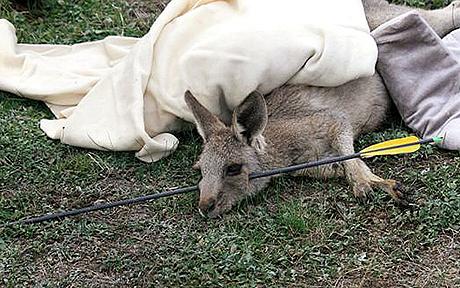 Kangaroo survives arrow shot through head Kangaroo survives arrow shot through head
Melbourne (2009):
‘A kangaroo survived for about a week after being shot through the head with an arrow, wildlife officials said, and is expected to make a full recovery. Wildlife Australia has posted a A$10,000 dollar (£5,032) reward to find the person responsible for shooting the kangaroo, which was found in parkland near Melbourne’s outer suburbs on Thursday.
Veterinary surgeons from Melbourne Zoo operated on the stricken animal over the weekend and were optimistic about his chances.
“This was a big injury, but because the arrow didn’t seem to have been in there for a long time, and the injury was fresh, hopefully he’ll be okay,” said Michael Lynch, a vet at Melbourne Zoo.
“I’m cautiously optimistic about the kangaroo’s prospects for a full recovery.”
The marsupial was rescued just days after another kangaroo was found with an arrow in its rump in the same location, said Fiona Corke, a Wildlife Victoria spokesman. She said her organisation wanted to catch those responsible.
“It’s just unbelievable, I just can’t believe that anybody would do something so cruel. It must be a very cold-hearted person to do that,” she told national news agency AAP.
Miss Corke said the kangaroo was believed to have survived for up to a week before it was discovered and taken to an animal hospital.
.
(Source: ‘Kangaroo survives arrow shot through head‘, Telegraph (UK), 20090511, ^http://www.telegraph.co.uk/news/worldnews/australiaandthepacific/australia/5309242/Kangaroo-survives-arrow-shot-through-head.html)
Tags: air gun, air rifle, animal cruelty, bb gun, hillbilly, Ivan Milat, kangaroo poaching, Martin Bryant, pellet gun, Shooters Party, slug gun, Wildlife
Posted in Kangaroos and Macropods, Threats from Poaching and Poisoning | 1 Comment »
Add this post to Del.icio.us - Digg
Saturday, December 3rd, 2011
This article was initially published by Tigerquoll 20090622 onCanDoBetter.net under the article title ‘Rees’ ‘red hot go’ hunting in our National Parks‘. It has been modified somewhat.
.
New South Wales Premier Rees is set to pass into law a ‘Game and Feral Animal Control Amendment Bill 2009‘ to permit recreational hunters shooting everything and anything in protected National Parks across NSW, including native wildlife.
Controlling feral animals is a science, not a sport. Rees’ passion for sport is compromised by influential cronies and naivety. Problem is: Rees has no knowledge, experience in or aptitude for science. His inaugural “red hot go” says it all and threatens to be his legacy.
 Australian Wood Duck (Chenonetta jubata) Australian Wood Duck (Chenonetta jubata)
(a native species not protected)
©Photo by Ákos Lumnitzer (with permission), ^http://www.amatteroflight.com/
.
Be clear, the Game and Feral Animal Control Amendment Bill 2009, Schedule 3, Part 2 lists the following Australian native fauna as free ‘game‘, including:
.
Native Ducks:
Australian Shelduck (or Mountain Duck) (Tadorna tadornoides)
Australian Wood Duck (or Maned Duck) (Chenonetta jubata)
Black Duck (or Pacific Black Duck) (Anas superciliosa)
Blue-winged Shoveler (or Australasian Shoveler) (Anas rhynchotis)
Chestnut Teal (Anas castanea)
Grass Duck (or Plumed Whistling Duck) (Dendrocygna eytoni)
Grey Teal (Anas gibberifrons)
Hardhead Duck (or White-eyed Duck) (Aythya australia)
Pink-eared Duck (Malacorhynchus membranaceus)
Water Whistling Duck (or Wandering Whistling Duck, Whistling or Wandering Tree Duck) (Dendrocygna arcuata)
Native Quails:
Brown Quail (Coturnix ypsilophora)
Stubble Quail (Coturnix pectoralis)
Native Birds:
Australian White Ibis (Threskiornis molucca)
Black Swan (Cygnus atratus)
Common Bronzewing Pigeon (Phaps chalcoptera)
Galah (Eolophus roseicapilla)
Little Corella (Cacatua sanguinea)
Long-billed Corella (Cacatua tenuirostris)
Purple Swamphen (Porphyrio porphyrio)
Straw Necked Ibis (Threskiornis spinicollis)
Sulphur Crested Cockatoo (Cacatua galerita)
Topknot Pigeon (Lopholaimus antarcticus)
Kangaroos:
Eastern Grey Kangaroo (Macropus giganteus)
Euro (Macropus robustus)
Red Kangaroo (Macropus rufus)
Western Grey Kangaroo (Macropus fuliginosus)
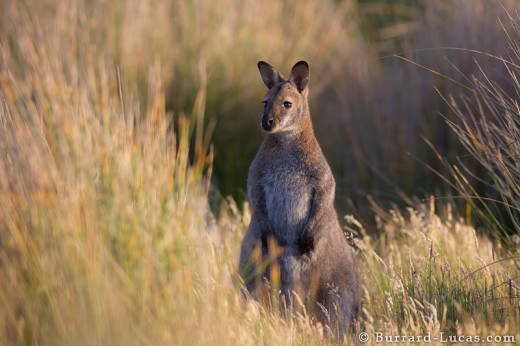 Bennetts Wallaby (Red-Necked Wallaby) (Macropus rufogriseus)
is native to Tasmania, but is not protected
(© Photo Burrard-Lucas) ^http://www.burrard-lucas.com/ Bennetts Wallaby (Red-Necked Wallaby) (Macropus rufogriseus)
is native to Tasmania, but is not protected
(© Photo Burrard-Lucas) ^http://www.burrard-lucas.com/
.
If the proposed legislation is genuinely and solely to control feral animals, the National Parks and Wildlife Service (NPWS) as delegated custodian of National Parks in New South Wales, must first answer these questions:
- Why are native animals included amongst the ferals?
- What action in fact has the NPWS undertaken over the last 20 years to control ferals in National Parks across NSW?
- Which measures have been successful at dealing with the target species and which have not?
- Which measures have caused a detrimental impact on non-target species?
- What interstate or overseas model/case study does NPWS rely upon to justify why shooting is the preferred method of control?
- What standard of identification test is imposed on would be feral shooters?
- What standard of marksmanship is required and what NPWS-approval system would be in place?
- What monitoring is to be conducted of these shooters and by whom?
- What happens to the carcasses to prevent disease?
.
If NPWS was serious about controlling feral animals in National Parks, it would have a permanent programme to specifically deal with the key threatening processes that involve ferals, namely to target:
- Competition and grazing by the feral European rabbit
- Competition and habitat degradation by feral goats
- Environmental degradation caused by feral deer
- Predation by feral cats
- Predation by the European Red Fox
- Predation, habitat degradation, competition and disease transmission by feral pigs.
SOURCE: DEC, ^http://www.threatenedspecies.environment.nsw.gov.au/tsprofile/pas_ktp.aspx
.
These feral species need to be the primary target of eradication. Professional contract shooting may be an option, but it is not for ‘weekend warrriors‘. The solution must be science-based not sport-based.
According to the Australian Wildlife Conservancy:
“Australia has the worst mammal extinction record in the world – 27 mammals have become extinct in the last 200 years. No other country or continent has such a tragic record of mammal extinctions.”
.
.
 . .
In June 2009 the Game and Feral Animal Control Amendment Bill was introduced into the NSW Upper House by Shooters Party MP Robert Brown, that would pave the way for hunting in national parks, private game reserves, the hunting of native species and the growth of recreational shooting on public and private lands (Sydney Morning Herald, page 6, 12 June 2009). Lee called on the Environment Minister Carmel Tebbutt to reject outright a new bill from the Shooters Party.
.
The NSW Government has withdrawn its support for the bill, but it is still before the NSW Parliament!
.
[Source: Australian Greens Party Senator Lee Rhiannon, ^http://archive.leerhiannon.org.au/portfolios/firearms/firearms/atct_topic_view?b_start:int=10&-C=]
.
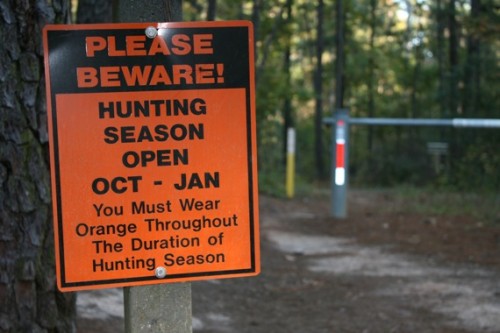
Overview of the Game and Feral Animal Control Amendment Bill 2009:
.
The object of this Bill is to amend the Game and Feral Animal Control Act 2002 (the Act) as follows:
- To enable the Minister responsible for national park estate land to make that land available for the hunting of game animals by licensed game hunters
- To expand the list of game animals that may be hunted in accordance with the Act and, in the case of any native game animals that are listed, to impose special requirements in relation to the hunting of those animals by licensed game hunters
- To provide for the operation of private game reserves under the authority of a licence granted by the (NSW) Game Council
- To make it an offence to approach persons who are lawfully hunting on declared public hunting land or to interfere with persons lawfully hunting game animals
- To make a number of other amendments of an administrative, minor or consequential nature..
.
[Source: ^ http://www.parliament.nsw.gov.au/prod/parlment/nswbills.nsf/1d4800a7a88cc2abca256e9800121f01/6dce0470707e4f4bca2575b4001bd3f1/$FILE/b2009-031-d10-House.pdf]
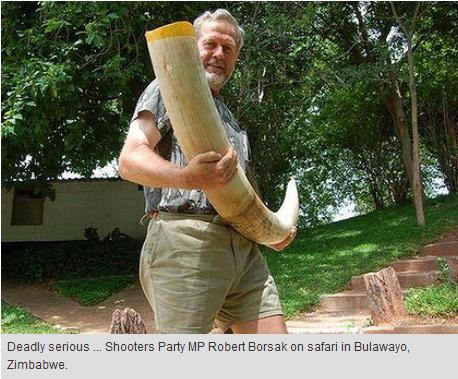
Support from the Coalition of Law Abiding Sporting Shooters Inc (CLASS):
.
‘For too long large areas of bushland has been locked away (aka protected from exploitation) as National Parks, State Forests etc. In many of those parks and forests invasive plants, such as blackberries, bracken, lantana, etc have grown unchecked, resulting in a great unbalance among local flora leading to reduced biodiversity among fauna. Permitting conservation hunting in those areas will help restore the balance, while permitting controlled harvesting of native and introduced species for food, trophies or fur/leather….the Game and Feral Animal Control Amendment Bill 2009 will go a long way to utilising the inherent value of sustainable resources which would otherwise be wasted.’
[Source: ^http://www.c-l-a-s-s.net/game-bill.htm]
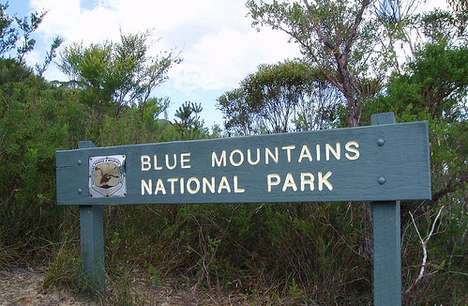 According to CLASS, wildlife in National Parks are wasted resources According to CLASS, wildlife in National Parks are wasted resources
.
.
Selected background articles at the time:

‘Government deal to open national parks to shooters’
.
[Source: Erik Jensen, 20091021, Sydney Morning Herald ^http://www.smh.com.au/environment/conservation/government-deal-to-open-national-parks-to-shooters-20091020-h6yt.html]
.
Hunters will be allowed to shoot animals in national parks for the first time under a deal offered to the Shooters’ Party by the NSW Government. The Herald understands the deal would modify a private member’s bill introduced by a member of the Shooters’ Party, Robert Brown, to allow hunting in 13 national parks if the Shooters’ Party removed demands for enclosed game reserves or safari parks from its draft legislation.
”We have had discussions with senior Labor people,” Mr Brown said. ”I’m not going to confirm or deny that we’re any closer to a resolution … My bottom line is the whole bill must be passed or we continue to withdraw our support for the Government.”
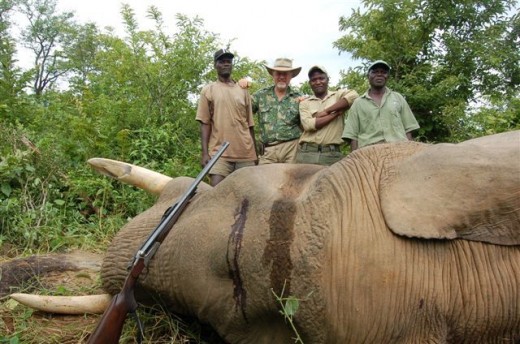
The Shooters’ Party has been holding the Government to ransom since introducing the bill in June and yesterday voted against the Government on all legislation in the upper house. Negotiations on the bill had broken down with the Premier’s chief of staff, Graeme Wedderburn – who Mr Brown described as ”tits on a bull” – but resumed in September, less than a week after John Robertson took over the environment portfolio. The Treasurer, Eric Roozendaal, one of Mr Robertson’s factional allies, took part in negotiations.
According to Mr Brown, the pair offered a memorandum of understanding that would allow hunting in national parks along the Queensland and South Australian borders. But he said the proposed parks were too far away.
”The closest one to Sydney was 10 hours’ drive,” he said. ”That [offer] was there to f— us, as far as I’m concerned.”
The Greens’ spokeswoman on animal welfare, Lee Rhiannon, said the deal was intended to allow free passage of Government legislation through the upper house but may cost Labor seats at the next election – including that of the former environment minister Carmel Tebbutt.
”We’re about to come into the busiest legislation time of the year. They’re going to have to pass 30 bills in a week,” she said. ”If they don’t have the Shooters’ on side, they’ll actually have to talk to other people. [But] as well as being ethically wrong and environmentally damaging, they will be inflicting enormous pain and damage to their own party … For Tebbutt and [Verity] Firth, they could well be putting an expiry date on their political careers.”
The acting executive officer of the National Parks Association of NSW, Bev Smiles, said her office had received an overwhelming amount of correspondence criticising the bill.
”We were hoping the Shooters were having some other face-saving deals with 12-year-olds and airguns,” Ms Smiles said, with reference to another bill the party is introducing.
”[But] with a new Minister for the Environment having an upper house position rather than an electorate, it’s all political. This particular deal has probably created more response from a broader cross-section of the community than any other issue I’ve been involved in.”
Neither Mr Robertson nor Ms Tebbutt would comment on the deal. Mr Brown said he would continue to frustrate government policy until his bill was passed in its entirety.

.
.
‘Greens oppose recreational hunting in national parks’
.
[Source: Marian Wilkinson, Environment Editor, Sydney Morning Herald, 20090612, ^http://www.smh.com.au/environment/conservation/greens-oppose-recreational-hunting-in-national-parks-20090611-c508.html]
.
A new bill that would open the state’s national parks and reserves to recreational hunters who could be licensed to shoot native animals and birds has been condemned by the NSW Greens, the Liberal Party and environmental groups.
The NSW Shooters Party has introduced the private members bill to Parliament. It allows for private game reserves to be set up for professional safari hunters, overturning NSW laws that prevent the enclosing of animals on land solely for hunting purposes. A Shooters Party MP, Robert Brown, said the bill would not allow the hunting of threatened species and, in the case of native waterfowl, licensed game hunters would be required to pass an official identification test of the ducks.
But the Opposition’s environment spokeswoman, Catherine Cusack, attacked the bill, saying key elements were unacceptable. “We totally reject the idea of shooting in national parks and the concept of shooting native animals in national parks is repugnant to almost anyone.”
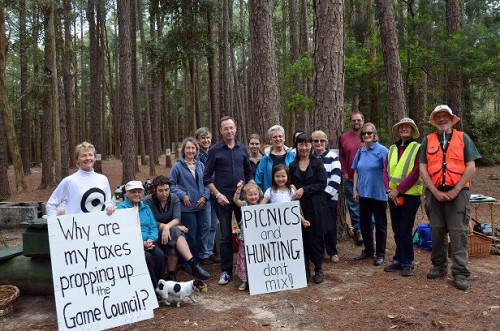
Among the birds and animals that could be hunted are the Australian wood duck, the chestnut teal and grey teal ducks, galahs, corellas and eastern grey, western grey and red kangaroos. The Shooters Party hopes to gain the Government’s support for the bill but the Environment Minister, Carmel Tebbutt, is already signalling she will oppose key provisions in it, including allowing recreational hunters into national parks and the hunting of native animals. Her spokeswoman said the Government would consider the bill’s merits but it did not support “the hunting of native animals or hunting in national parks“.
Mr Brown said the bill drew on many of the recommendations of a government-backed review of existing laws undertaken with staff from the NSW Department of Primary Industries and the Game Council.
He said that under his bill, the environment minister would be responsible for declaring any national park or reserve open to hunters. He told the Herald that opening national parks to recreational hunters to shoot feral animals would save the Government significant amounts of money and the hunting of native animals and birds in parks would require ministerial approval.
The Greens leader, Lee Rhiannon, called on Ms Tebbutt to reject the entire bill, not only the provisions concerning national parks. “Opposing shooting in national parks may well be a tactic Labor is using to divert attention from the fact it will support other equally regressive changes being pushed by the Shooters Party,” Ms Rhiannon said.
The Greens are also concerned about provisions in the bill that would make it an offence to approach anyone or interfere with anyone “lawfully hunting game animals” on any land that had been declared public hunting land.
.
.
‘Shooting in national parks dead: Macdonald’
.
[Source: AAP, 20090729, ^http://www.smh.com.au/environment/conservation/shooting-in-national-parks-dead-macdonald-20090729-e1an.html]
.
A deal with the Shooters’ Party that would allow hunting in national parks is unlikely, the NSW Government says. The Government withdrew its support for the proposal last month, prompting the Shooters to retract their support for legislation to privatise NSW Lotteries management. Primary Industries Minister Ian Macdonald said today the national parks proposal was all but dead in the water.
“The Government has been considering these issues for some time and has taken a policy position that they don’t want that type of shooting activity in national parks,” Mr Macdonald told reporters in Sydney.
“I wouldn’t say it is likely to change, but there again, there’s nothing in life that’s immutable.”
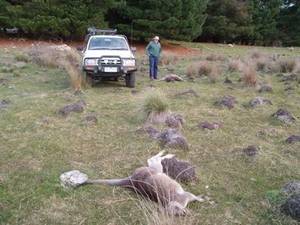
Kangaroos illegally shot through SE Forests National Park
.
.
Game and Feral Animal Control Repeal Bill 2010 – lapsed
.
On 23rd June 2010, then NSW Greens MP Lee Rhiannon introduced a private members bill to the NSW Parliament, ‘Game and Feral Animal Control Repeal Bill 2010’, designed to repeal the Game and Feral Animal Control Act 2002 and its regulations, to abolish the Game Council and to prohibit hunting for sporting or recreational purposes on national park estate land, Crown land and State forests. However although the Repeal Bill reached a second reading stage, the then Labor Premier Kristine Keneally suspended (proroged (suspended) the sitting of the NSW Parliament ahead of an election, and the Bill lapsed on 2nd September 201o.
It needs to be reinstated forthwith!
.
Overview of Bill
The objects of this Bill are as follows:
- To repeal the Game and Feral Animal Control Act 2002 and the regulations made under that Act
- To expressly abolish the Game Council and provide for the transfer of its assets, rights and liabilities to the Crown
- To prohibit hunting for sporting or recreational purposes on national park estate land, Crown land and State forests
.
‘Greens’ Bill abolishes Game Council, ends hunting in State Forests, NP‘
.
[Source: The Australian Greens, 20100624, ^http://greens.org.au/content/greens-bill-abolishes-game-council-ends-hunting-state-forests-np]
.
Greens MP Lee Rhiannon was last night given urgent leave by the NSW Upper House to introduce her private members bill to abolish the NSW Game Council and prohibit recreational hunting in national parks, state forests and public land.
The Game and Feral Animal Control Repeal Bill 2010 is now available.
“Feral animals are a significant environmental problem in Australia but the Games Council, set up as a favour by the Labor Party to the Shooters Party to shore up their vote, is a bankrupt vehicle for managing invasive species,” Ms Rhiannon said. “The more than $11 million in public funding and millions in loans spent propping up the Gaming Council since 2002 would be better spent developing an evidenced based, strategic plan using professionals to tackle invasive species.
“The Game Council was set up to be self funding, yet the Auditor General has noted its ongoing financial difficulties, with the government being forced to prop it up with loans and additional recurrent funding to manage ongoing debt problems.
“Former Premier Bob Carr’s establishment of the Game Council in 2002 was an act of unashamed capitulation to the gun and hunting lobbies, legitimising recreational animal cruelty while risking an increase in feral animal populations.
“The Greens Bill also prohibits recreational hunting in state forests, national parks and Crown Land.
“As part of the deal making between Labor and the Shooters Party, NSW’s state forests have been lately opened up to recreational shooters, risking public safety. “There is still currently a Shooters Party private members bill before parliament which if passed would broaden where recreational shooters can hunt to include national parks.
“The NSW government has agreed to various demands by the Shooters Party for changes to gun ownership laws in recent years and there is no guarantee that shooting in national parks will not be next on the list. “In the interests of the environment and good government NSW Labor should support the Greens’ bill to abolish the Game Council and ensure the professional and scientific management of invasive species in NSW,” Ms Rhiannon said.
.
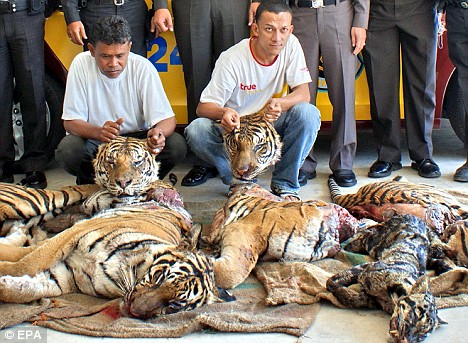
It’s 2011 and we’re still killing Tigers!
[‘Police Seize Firearms Used by Wildlife Officials to Fight Off Poachers‘ by Sarah Pappin, Bushwarriors, 20100716,
^http://bushwarriors.wordpress.com/tag/south-china-tiger/]
.
In only the last eight years, the Bengal Tiger population has decreased by over 61% and is now frighteningly close to extinction with only 1,400 of the cats left. Habitat loss and poaching are to blame for their decline. Nagarhole Tiger Reserve is home to the highest density of these tigers in all of India, attracting a heavy and constant flow of poachers. Forest officers tasked with protecting the National Park’s tiger population (and other wildlife) from the poachers are now impeded by a devastating combination of muddy monsoon conditions and a complete lack of defense.
Comments:
.
Arvind Telkar (20100717): “Poaching is one of the heinous crimes, which must be dealt with a very severe punishment. The law should be changed in such a manner, that he must think hundred times before aiming any wild animal.”
.
Franklin Joel (20100717): “Thank you very much for sharing,I am sharing this on my wall. Please do something to Stop Poaching, My eyes are wet seeing these pictures..The Hon. court should pronounce the highest punishment to these people….”
.
Anne Maher (20100719): “Absolute tragedy. Decisions made by idiots. They must be in on the corrupt poaching activities to leave the Wildlife rangers and the Tigers so unprotected. Spare us from brainless individuals.”
.
Amay (20100903): “What cruel people they are the biggest criminals i hav ever seen in my life how badly these people hav cut the tigers they truly deserve a capital punishment.”
.
Zachary (20101118): “What the hell is wrong with these people?! why don’t they do something to stop this? I don’t give a damn if they think that certain parts have special healing or good luck charms, this is wrong! This is just digusting.”
.
 An effective tool against poachers An effective tool against poachers
.
 An effective but under-resourced force against poachers An effective but under-resourced force against poachers
.
Tags: animal cruelty, Australian Wood Duck, Bennetts Wallaby, Coalition of Law Abiding Sporting Shooters, Game and Feral Animal Control Amendment Bill 2009, Game and Feral Animal Control Repeal Bill 2010, hunting, hunting season, illegal shooting, Lee Rhiannon, national parks, NSW Game Council, NSW Government, Premier Nathan Rees, SE Forests National Park, Shooters and Fishers Party, still killing Tigers, weekend warriors, Wildlife, wildlife poaching
Posted in Africa, Birds (Australian), Birds (Migratory), Blue Mountains (AU), Elephants, Kangaroos and Macropods, Threats from Poaching and Poisoning | No Comments »
Add this post to Del.icio.us - Digg
Friday, December 2nd, 2011
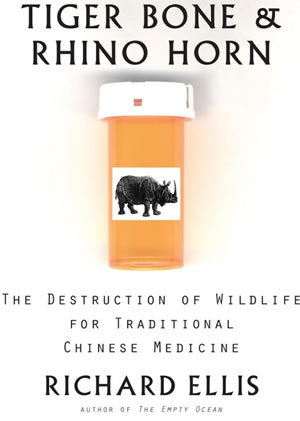
Mass murder is considered possibly the worst crime that can be committed.
But there is a worse crime than mass murder and worse than war crime, and worse than crimes against humanity. Murder; extermination; torture; rape; political, racial, or religious persecution and other inhumane acts reach the threshold of crimes against humanity only if they are part of a widespread or systematic practice.
Even worse than crimes against humanity is the extreme extension of mass murder – genocide. Genocide is “the deliberate and systematic destruction, in whole or in part, of an ethnic, racial, religious, or national group”. What crime could possible be more evil than the willful targeting of an entire part of the human species in order to systematically wipe it out of existence? – such as what has been attempted upon the Jews, Armenians, Rwandan Tutsis, Bosnian Muslims, Sri Lankan Tamils.
 Armenian Genocide 1915 Armenian Genocide 1915
.
“More inhumanity has been done by man himself than any other of nature’s causes.”
~ (1673) by Samuel von Pufendorf
.
Yet still, there is a worse crime. It is the deliberate and systematic destruction, in whole or in part, of an entire species from the planet. In the same vein as genocide, is human-caused extinction or ‘speciescide‘, a relatively new concept. It is new concept because humans have only recently recognised species extinction as a problem. It is also a new concept because the global rate of non-human species extinction is increasing at an accelerating rate.
‘Speciescide‘ is a derived concept from the ecophilosophy of ‘speciesism‘ being a prejudice manifested as a widespread discrimination practised by humans against other species (Richard D. Ryder, 1973).
Yet deliberately causing a species to become regionally extinct, extinct in the wild or globally extinct, are not yet recognised as crimes legally. Human-caused extinction of a species is not yet a criminal offense.
Yet it is the most immoral crime that can be inflicted on the planet. Even if a nuclear holocaust wiped out 6 billion of the human species, there would still be one billion surviving from which to perpetuate the species. But wiping out an entire species is absolute, irreversible, extincting.
The Convention on the Prevention and Punishment of the Crime of Genocide establishes “genocide” as an international crime, which signatory nations “undertake to prevent and punish.”
It says that genocide means any of the following acts committed with intent to destroy, in whole or in part, a national, ethnical, racial or religious group, as such:
- Killing members of the group;
- Causing serious bodily or mental harm to members of the group;
- Deliberately inflicting on the group conditions of life calculated to bring about its physical destruction in whole or in part;
- Imposing measures intended to prevent births within the group;
- Forcibly transferring children of the group to another group.
.
Speciescide is a worse crime than described by the above definition of genocide and even worse than the previous “the deliberate and systematic destruction..” definition.
Speciescide is ecological genocide. It entails annihilating very member of a species until there is no surviving individual on the planet – the entire species becomes globally extinct. They will never be seen again on the planet. Speciescide is thus the worst hate crime possible. Speciescide is what Tasmanian colonists did to the Thylacene. It is what Traditional Chinese Medicine has just committed upon Africa’s Western Black Rhinoceros.
.
.

‘Africa’s Western black rhino declared extinct’
[Source: ‘Africa’s Western black rhino declared extinct’, Los Angeles Times, 20111010, ^http://latimesblogs.latimes.com/world_now/2011/11/africa-western-black-rhino-extinct-conservation.html]
.
Africa’s Western black rhino has officially been declared extinct and other subspecies of rhinoceros could follow, according to the latest review by a leading conservation organization.
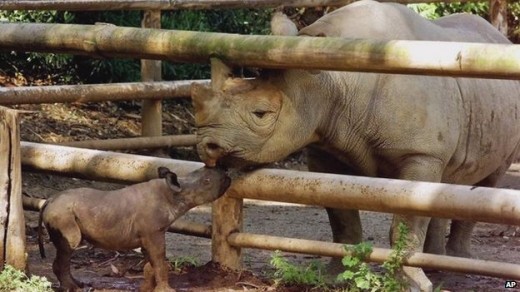 Western Black Rhino and her calf – never again on the planet Western Black Rhino and her calf – never again on the planet
.
The International Union for Conservation of Nature listed the Northern white rhino in central Africa as “possibly extinct in the wild” and the Javan rhino as “probably extinct” in Vietnam.
The organization blamed a lack of political support for conservation efforts in many rhino habitats, international organized crime groups targeting the animal, increasing illegal demand for rhino horns and commercial poaching.
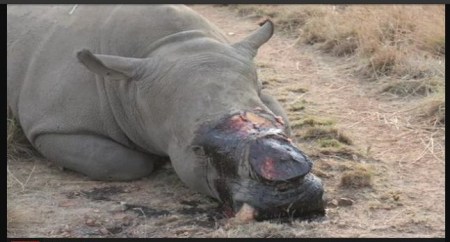
“In the case of both the Western black rhino and the Northern white rhino, the situation could have had very different results if the suggested conservation measures had been implemented,” Simon Stuart, chairman of IUCN’s Species
Survival Commission, said in a statement Thursday. “These measures must be strengthened now, specifically managing habitats in order to improve breeding performance, preventing other rhinos from fading into extinction.”
The last Javan rhino in Vietnam is believed to have been killed by poachers in 2010, reducing the species to a tiny, declining population in Java.
.
The rhinos were among more than 61,900 animal and plant species reviewed for the IUCN’s latest Red List of Threatened Species. A quarter of the mammals on the Red List were found to be at risk of extinction. But the organization said there
have also been conservation successes. Fewer than 100 Southern white rhinos survived at the end of the 19th century, but the population in the wild is now believed to number over 20,000. Numerous other species are threatened, including many types of plants. The Chinese water fir, which used to be widespread throughout China and Vietnam, was listed as “critically endangered,” due primarily to expanding intensive agriculture. The IUCN also listed five out of eight tuna species as “threatened” or “near threatened,” and added 26 recently discovered amphibians to the Red List, including the blessed poison frog.
“This update offers both good and bad news on the status of many species around the world,” said Jane Smart, director of the IUCN Global Species Program. “We have the knowledge that conservation works if executed in a timely manner, yet, without strong political will in combination with targeted efforts and resources, the wonders of nature and the services it provides can be lost forever.”
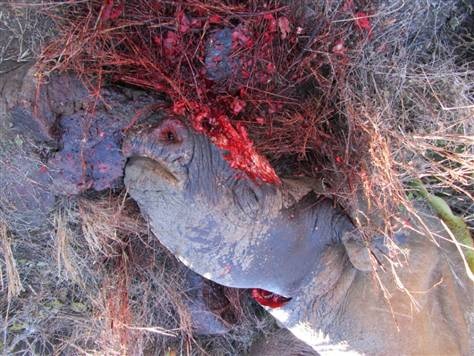 Stumpy’s lifeless body, her life stolen by poachers
(Photo credit: Lewa Wildlife Conservancy)
. Stumpy’s lifeless body, her life stolen by poachers
(Photo credit: Lewa Wildlife Conservancy)
.
‘Stumpy was the oldest female black rhino at the Conservancy, and had spent 26 years enjoying her freedom on the property. Her eighth calf, only a year and a half old, was dealt a minor wound to the neck in the incident and will survive. Coincidentally, on the day Stumpy drew her last breath, a first breath was taken by a newborn rhino at the rhino refuge.’
.
[Source: ^http://bushwarriors.wordpress.com/tag/rhino-horn-trade/page/6/]
.

.
.
‘DEAD MEN DON’T DEAL’ Campaign
.
Rhinos have been slaughtered to near extinction to satisfy the demand of rhino horn products in China and Vietnam. All based on rhino horn cultural myths. It has the same effect as chewing ones fingernails.
China is costing the world its rhinos.
.
- It is seen as a remedy for nearly everything (evil possession included) in China and Vietnam
- China and Vietnam fund international organized poaching teams to kill rhino.
- Science proves there is no medicinal value about rhino horn.
- Rhino is said to be the most endangered species to date.
.
However, even if Chinese trade makers are aware that the Rhino population is on near brink to extinction; the continual demand for rhino horn persists.
Unless a serious measure evolves, Chinese businessmen will not stop.
(Ed: This is speciescide)

So, the idea sprung to mind to form a campaign that will create a cultural scare. Namely, the DEAD MEN DON’T DEAL campaign that revolves around the sudden deaths of dealers. Without knowing who or how these smugglers are tortured it will create a cultural scare amoungst those who are guilty. The idea derives from laying revenge out into the air. The revenge of the rhino. Getting back at those who took away a lot of the rhino population. The main objective here is to create fear for those who are involved in the illegal dealing of rhino horn.
.
Dehorning
The demand for Rhino has become so high that conservation officials have gotten to the point where they actually saw off their horns so rhino poachers will have no cause to kill them. These desperate measures have raised questions if removing Rhino horn impairs the rhino’s ability to survive or reproduce; one usage of the horn is to defend a mother’s young from predators.
Many parks and game reserved have battled the on going poaching around this endangered specie. Dr David Mabunda- Chief executive of SANParks stated that it is no longer appropriate to refer to this illegal action as poaching anymore as the levels of sophistication, violence and money behind it continue to raise. He also stated that the country has been working hard to bring this nearly extinct specie back, even if it requires one to become the last standing man.
Endangered stats continue to rise as reports keep coming in. In January an epidemic occurred where poachers were found using aircraft to hunt down rhino in Harare-Zimbabwe, as demand in Asia was great due to medicinal benefit growth. 7 endangered rhinos were killed, this representing one third of 22 rhinos poached throughout 2010. South Africa has about 1000 surviving rhino’s n which extra help for their existence has been sent, last year 333 rhinos were poached in South Africa nearly three times as many then 2009. However, 2011 proves to have lowered the killings. South Africa has over 21 000 more rhinos then any country in the world which puts the country as well as the animals in greater danger.
Demands in Vietnam have been noticed to increase. The black market offers huge amounts of money for trading these species for Traditional Chinese Medicine such as high blood pressure and other impairments. Experts state that as little as 5 rhinos remain in Vietnam. South Africa has become internationally known for banning rhino horn distribution.
World efforts to ‘demystify’ the medicinal affects of rhino horn fail to reach Asia and thus the uproar continues.
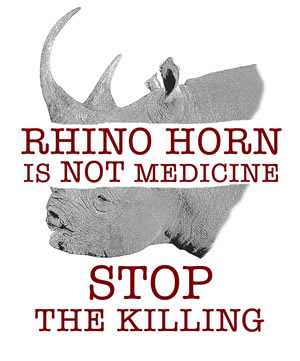
[Source: ^ http://savetherhino.wordpress.com/]
.
.
“For one species to mourn the death of another is a new thing under the sun. The Cro-Magnon who slew the last mammoth thought only of steaks. The sportsman who shot the last passenger pigeon thought only of his prowess. The sailor who clubbed the last auck thought of nothing at all. But we, who have lost our pigeons, mourn the loss. Had the funeral been ours, the pigeons would hardly have mourned us. In this fact, rather than in Mr. DuPont’s nylons or Mr. Vannevar Bush’s bombs, lies objective evidence of our superiority over the beasts.”
.
~ Aldo Leopold: ‘A Sand County Almanac, and Sketches Here and There‘, 1948, Oxford University Press, New York, 1987, pp. 109-110.
.
.
.
Further Reading:
.
[1] Book: ‘ Tiger Bone and Rhino Horn: The Destruction of Wildlife for Traditional Chinese Medicine‘
by Richard Ellis
Format: Hardcover, 294 pages, Revised and Tea Edition
Release Date: 27 May 2005
‘In parts of Korea and China, moon bears, black but for the crescent-shaped patch of white on their chests, are captured in the wild and imprisoned in squeeze cages, where steel catheters drain their bile as a cure for ailments ranging from upset stomach to skin burns. Rhinos are being illegally poached for their horns, as are tigers for their bones, thought to improve virility. Booming economies and growing wealth in parts of Asia are increasing demand for these precious medicinals while already endangered species are being sacrificed for temporary treatments for nausea and erectile dysfunction. Richard Ellis, one of the world’s foremost experts in wildlife extinction, brings his alarm to the pages of “Tiger Bone & Rhino Horn”, in the hope that through an exposure of this drug trade, something can be done to save the animals most direly threatened. Trade in animal parts for traditional Chinese medicine is a leading cause of species endangerment in Asia, and poaching is increasing at an alarming rate. Although most of traditional Chinese medicine is not a cause for concern because it relies on herbs and other plants, as wildlife habitats are shrinking for the hunted large species, the situation is becoming ever more critical. Ellis tells us what has been done successfully, and contemplates what can and must be done to save these rare animals from extinction.’.
[Source: ^http://www.fishpond.com.au/Books/Tiger-Bone-and-Rhino-Horn-Richard-Ellis/9781559635325]
.
.
.
Tags: China, ecological genocide, ecophilosophy, extincting, Richard Ellis, speciescide, speciesism, TCM, TCM witchdoctor cult, tiger bone and rhino horn, Traditional Chinese Medicine, Vietnam, Western Black Rhino extinct, wildlife poaching
Posted in 21 Going Khaki!, Rhinoceroses, Threats from Poaching and Poisoning, Tigers | No Comments »
Add this post to Del.icio.us - Digg
Friday, October 28th, 2011

From its satellite image, Tasmania is a green ‘apple’ isle
(except the bright ‘apple’ colour dominating Tasmania’s east is grass, long clear-felled forest for farming.
Any wonder why Eastern Tasmania lives in a rain-shadow getting just 600 mm of rainfall a year.)
.
 . .
.
Any State that uses 1080 is backward and internationally sends a message of being so.
It’s tourism marketing should have its brand tarnished so. Tasmania’s ecological image deserves to be as bad as New Zealand’s. NZ’s Department of Conservation drops 1080 indiscriminately out of helicopters in spades.
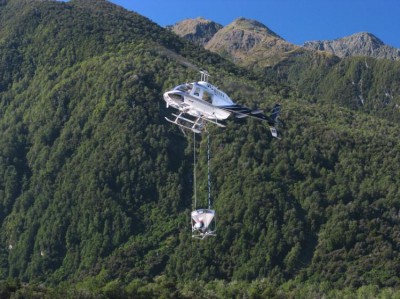
‘Pure’ New Zealand has a reputation for aerial poison of its native forests using ‘1080 poison’
.
The natural forest vista harbours a sterile faunal ecosystem. Tourism doesn’t care. It’s promotional photos still convey its target ‘pristine’ image, irrespective of the faunal carnage below the tree canopy.
‘Satellite Pristine’ – a ecologically contestable concept, eh?
I am sure that Guantanamo adopted a military ‘spit -and-polish’ image from the front gates too.’
.
 The entrance to Camp Justice, the site of the U.S. war crimes tribunal compound,
at Guantanamo Bay U.S. Naval Base in Cuba (Reuters)
The entrance to Camp Justice, the site of the U.S. war crimes tribunal compound,
at Guantanamo Bay U.S. Naval Base in Cuba (Reuters)
.
by Tigerquoll
Suggan Buggan
Victoria 3885
Australia
.
Tags: 1080 poison, aerial poisoning, Camp Justice, Eastern Tasmania, Guantanamo, New Zealand aerial baiting, New Zealand Apples, rain-shadow, satellite pristine, Tasmanian apples
Posted in Tasmania (AU), Threats from Poaching and Poisoning, Threats to Wild Tasmania | No Comments »
Add this post to Del.icio.us - Digg
Wednesday, October 26th, 2011
It’s past time that the barbaric and backward chinese culture of Traditional Chinese Medicine (TCM) was recognised by the world’s civilized countries for what it is, an evil cult against wildlife, and so criminalised along with Female Genital Mutilation forthwith. Neither serve any purpose except barbaric harm.
TCM superstition claims that rhino horns cure typhoid fever, convulsions, cancer, rheumatism, gout, snakebites, hallucinations, headaches, carbuncles, vomiting, food poisoning, and ‘devil possession’. What backward quackery! Even the the rhino’s skin and faeces is used by TCM witchdoctors. Being superstitious and backward is one thing, but such ludicrously is driving and perpetuating the chinese illegal wildlife poaching of rhinos and elephants for their horns. Is this why the chinese regime is spreading its influential tentacles across Africa?
 Dried Tiger bone, Moon Bear bile, ground Elephant horn
All packaged and sold in an innocuous TCM grocer,
belying the world’s most barbaric cult against wildlife Dried Tiger bone, Moon Bear bile, ground Elephant horn
All packaged and sold in an innocuous TCM grocer,
belying the world’s most barbaric cult against wildlife
.
Today we learn that the last Javan rhino subspecies in Vietnam was found poached for its horn. It is now extinct.
The Javan rhino is Critically Endangered on the IUCN Red List of Threatened Species. In 2009 only ten individuals of the subspecies Rhinoceros sondaicus annamiticus remained in South Vietnam’s rainforest region.
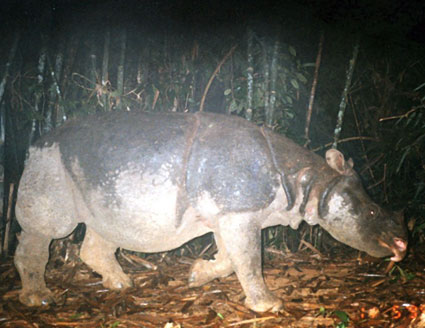 Javan one-horned Rhinoceros extinct as from yesterday due to poachers paid by the TCM witchdoctor cult Javan one-horned Rhinoceros extinct as from yesterday due to poachers paid by the TCM witchdoctor cult
.
‘Vietnam has lost its fight to save its rare Javan rhinoceros population after poachers apparently killed the country’s last animal for its horn, pushing one of the world’s most endangered species closer to extinction, a conservation group (World Wildlife Fund) said Tuesday (25th October 2011).
Vietnam’s Cat Tien National Park has had no sightings, footprints or dung from live rhinos since the last known animal living there was found dead last April, shot through the leg with its horn chopped off, the WWF said. Genetic analysis of rhino feces had confirmed in 2004 that at least two rhinos were living in the park, raising hopes that Vietnam’s population might survive.
Only 40 to 60 Javan rhinos now remain in Ujung Kulon National Park in Indonesia. They are the last known living members of the species, with none in captivity.
Vietnam’s Javan rhino population had been shrinking for decades as land conversion and a rising local population threatened the animal’s habitat, but poaching and a lack of effective park management and patrols hastened the decline, said Christy Williams, coordinator of WWF’s Asian Elephant and Rhino Program.
“It appears that protection is not being given a high priority by the Vietnamese government,” he said. Park director Tran Van Thanh said that while some of his rangers failed to fulfill their duties, it is impossible for them to stop all of the estimated 100,000 people living near the park from hunting exotic animals when the average farmer there earns around 150,000 dong ($7.50) per day.’
[Source: ‘Javan rhino goes extinct in Vietnam after last rhino poached‘, by Mike Ives, Associated Press, 20111026, ^http://www.csmonitor.com/World/Latest-News-Wires/2011/1026/Javan-rhino-goes-extinct-in-Vietnam-after-last-rhino-poached]
.
The subspecies Rhinoceros. sondicus inermis once found in Bengal, Assam, and Myanmar is now extinct. The subspecies Rhinoceros sondaicus sondaicus lives only in Ujung Kulon National Park, Java, and has less than 60 individuals remaining.

All these TCM potions and remedies contain a small amount of Rhinoceros horn
© Esmond Bradley Martin
.
The Yin and Yang philosophy may suggest a wholesome healthy balanced approach to alternative medicine, but according to the Australia Herbal Medicine Centre (a Chinese run practice in Sydney’s Chinese-centric Ryde)..”Chinese Herbal Medicines are mainly plant based, but some preparations include minerals or animal products.”
“Some of the conditions which may be treated by Chinese Herbal Medicine include:
- Chronic headaches
- Skin disorders
- Irritable bowel syndrome
- Constipation and diarrhoea
- Insomnia and fatigue
- Common cold and influenza
- Anxiety, depression and stress
- Allergies
- Rheumatoid and osteoarthritis
- Premenstrual syndrome and painful menstruation
- Excessive menstruation
- Infertility
- Impotence and prostate disorders
- Disorders associated with menopause
- Loss of appetite and common digestive disorders
- Fluid retention”
.
This all sounds impressive, but question is: Which remedies contain wildlife parts and so require illegal poaching? …sorry not on the label?
.
TCM is an evil backward cult inciting wildlife poaching and the key driver of wildlife extinctions around the globe. TCM ethically needs to be immediately banned, its barbaric practices made illegal and its products containing animal parts declared illegal wildlife trafficking and so an illegal import. Poaching endangered animals is far worse than mass slaughter of non-endangered animals or even the mass slaughter of humans. Species Extinction is the worst crime on the planet, because a whole species is threatened with extinction, not just a few million humans or so out of 7 billion.
.
The Sydney Institute of Traditional Chinese Medicine [http://www.sitcm.edu.au/] needs to immediately and publicly renounce any use of wild animal parts in its practice, else be immediately criminalised as an ecologically destructive cult.
Rhino Horn is not medicine – chew your nails instead. Go and see a real doctor!
.
.
.
Further Reading:
.
[1] ^ http://www.csmonitor.com/World/Latest-News-Wires/2011/1026/Javan-rhino-goes-extinct-in-Vietnam-after-last-rhino-poached
[2] ^ http://newswatch.nationalgeographic.com/2009/11/23/dogs_sniff_out_rhinos_of_vietanm/
[3] ^ http://www.asianscientist.com/topnews/wwf-traditional-chinese-medicine-rhino-horn-cancer-cure-cites-meeting/
[4] ^ http://www.guardian.co.uk/environment/video/2011/oct/25/javan-rhino-extinct-vietnam-wwf-video?newsfeed=true
[5] ^ http://www.rhinoconservation.org/2010/01/15/is-surge-in-illegal-rhino-horn-trade-linked-to-chinas-designation-of-tcm-as-strategic-industry/
[6] ^ http://www.treehugger.com/files/2011/01/does-protecting-endangered-rhinos-conflict-with-traditional-chinese-medicine.php
[7] ^ http://www.greenfudge.org/2011/08/22/tcm-quackery-fuels-brutal-rhino-poaching/
[8] ^ http://www.sciencebasedmedicine.org/index.php/asian-bear-bile-remedies-barbarism-or-medicine/
[9] ^ http://www.abc.net.au/news/2010-02-06/female-circumcision-happening-in-australia/2594496
.
Tags: Australia Herbal Medicine Centre, backward chinese, evil cult, Female Genital Mutilation, illegal wildlife trade, Javan Rhino subspecies extinct, rhino poaching, Rhinoceros sondaicus annamiticus, Sydney Institute of Traditional Chinese Medicine, TCM, TCM witchdoctor cult, Traditional Chinese Medicine, Tran Van Thanh, Ujung Kulon National Park, Vietnam Rhino extinct, wildlife extinction, world's most barbaric cult, WWF's Asian Elephant and Rhino Program
Posted in Africa, Rhinoceroses, Threats from Poaching and Poisoning | No Comments »
Add this post to Del.icio.us - Digg
|
|
 [Source: Xπr, Dublin, c.2007]
[Source: Xπr, Dublin, c.2007]
 Bengal Tiger (Panthera tigris tigris)
© naturepl.com/Francois Sevigny / WWF
Bengal Tiger (Panthera tigris tigris)
© naturepl.com/Francois Sevigny / WWF
 The Siberian tiger (Panthera tigris altaica), also known as the Amur tiger
The Siberian tiger (Panthera tigris altaica), also known as the Amur tiger

 Tiger Parts used in backward TCM Wine
Tiger Parts used in backward TCM Wine














 The real Christmas experience without cutting down a tree.
The real Christmas experience without cutting down a tree.










































